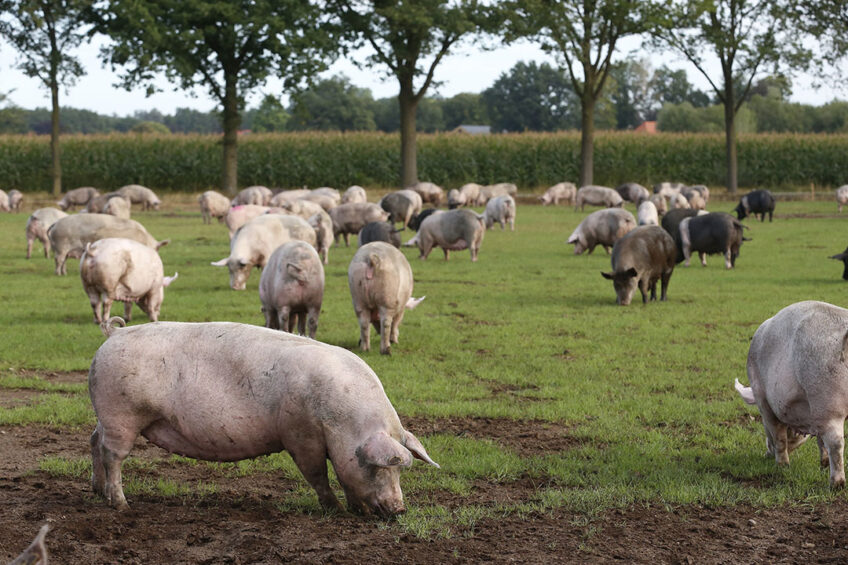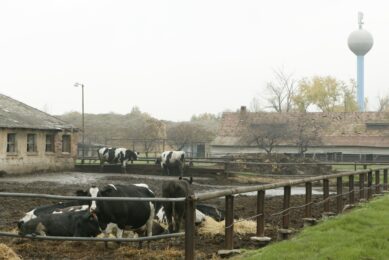Why Germany will get ASF under control

Now Germany had to face the first outbreaks of African Swine Fever virus in domestic pigs, the million dollar question more than ever is whether the country can get the spread of the virus under control. Pig Progress editor Vincent ter Beek is positive and gives 7 reasons why – even though the battle is far from won.
 Farms may not have had top-notch biosecurity
Farms may not have had top-notch biosecurity
The news of 3 farms being infected with ASF may sound huge, but it is worthwhile to note where the outbreaks occurred. That happened on one organic farm with 200 pigs, and 2 hobby farmers with 4 and 2 pigs respectively. Because of the ASF threat, the organic pig producer did keep his animals indoors, the others may likely have lived in a stables without high-quality and biosecure feed as well as sophisticated filtration. All in all, it looks like we are not talking about larger and conventional production here.
 Germany follows EU guidelines
Germany follows EU guidelines
There is a common way to combat ASF virus in wild boar in the European Union; an approach that has been successfully applied in Belgium and the Czech Republic. Essentially, this comes down to isolating the virus in a certain zone by fencing it off. Next, a second, so-called “white” zone is created around the first with another set of fences in which all wild boar will be actively hunted. That way, the virus will have no chance to “escape” from the isolated inner zone by jumping ono new porcine hosts. The last step is to go into the inner zone and shoot any of the remaining wild boar living there, in combination with surveillance and removal of carcasses.
That approach has been followed conscientiously by the German authorities. New infection zones are being fenced off, white zones have been put in place.
 Keeping fresh infections out by fences
Keeping fresh infections out by fences
The source of the infections comes from Poland, as the virus has been around in Western Poland since November 2019. The first response was to build temporary sheep fences along the border rivers Oder and Neisse, but those proved to be not much of a hurdle for wild boar, as even videos showed them swimming across the river and then jumping over or just run through those fences. Now the German authorities in the 3 states bordering Poland all followed the Danish example by constructing permanent fences of 1.20m high along the border.

The fences are not 100% water tight, as some parts get stolen or damaged, they are disputed because of their effect on other wildlife, plus there are gaps in the fence because of (rail)roads for instance. Still, they will help to reduce the risk of further spread by wild boar.
 Awareness has shot up
Awareness has shot up
If they weren’t already warned, the presence of ASF in Germany has woken up authorities, organisations, agricultural industry and hunters even further that strong attention and coordination is necessary to overcome this problem. More education is being given as to how ASF is to be kept out, positively influence human behaviour and pig producers in Eastern Germany are strongly advised to keep their pigs indoors as much as possible.
 Germany has an industry to protect
Germany has an industry to protect
Pig production is big business in Germany. The country is number #2 in Europe with over 1.5 million sows and a total pig meat production that has been hovering around the 5 million tonnes/year for years. In recent years there has been a slight decline, followed by Covid-19 related blows and the discovery of ASF in German wild boar, but the industry continues to be of importance that is hard to underestimate. A good reason to go the extra mile to overcome the problem as quickly as possible.
 Germany knows how to organise
Germany knows how to organise
Dealing with an outbreak of African Swine Fever demands good cooperation, clear regulations and following those strictly. If there is one country in the world that can live up to those expectations, it is Germany. The country has a top-notch reputation for being well-organised – one only has to look at the careful way Covid-19 is being handled. Incidence numbers have been kept down in recent months by a stringent attention for incidence numbers and throughout the country there is a network of free testing stations to allow citizens to obtain proof that they are indeed free from Covid-19.
 The virus did not protrude far into Germany
The virus did not protrude far into Germany
It’s good to look at the amount of km that ASF virus has managed to get into Germany – so far about 30km. Over 1,500 infected wild boar carcasses have been found in the 10 months between September 2020, all within a 30-km wide strip running north-south along the border. Now compare that to scientific literature and how things panned out in practice. In a presentation at the IPVS Congress in 2018, a model was presented stating that the virus could move west at a speed of 200km per year. In practice, however, it can be concluded that the virus travelled west through Poland by 100km per year. Compared to those numbers, 30km doesn’t sound that bad.
So does that mean that there aren’t any challenges ahead for Germany? Far from that. The country has its own set of challenges that need to be overcome. Below I’ve listed 7 as well.
 Decentralised coordination
Decentralised coordination
Where some countries have a strong central coordination to fight ASF, the major responsibility in Germany is with the individual states which have a relatively strong independence. As ASF so far has been a problem for 2 border states (Brandenburg and Saxony), it meant that the fight is being fought by responsible ministries in those 2 states. Updates are being reported by those states, and it was the states that were responsible for the construction of border fences, which were all completed at their own pace. In addition, the individual districts also play a role with the implementation of regulations, causing the line of responsibilities to be a bit of a hybrid pattern.
An example of that is the difficulty to set mandatory guidelines to keep all pigs indoors in case of a threat of ASF. Currently there is a strong advice to keep pigs indoors, but one farm has been able to be exempted by going to court to protect its right to keep sending the animals outdoors.

 Not all hunters are professionals
Not all hunters are professionals
Hunting is a strong national tradition in Germany and is performed by many, some professional, others doing it more for recreational reasons. In the hunting season 2019-2020 in Brandenburg state alone 100,000 wild boar were shot by this community of hunters. Now in the face of a serious health threat, what is needed is a strict implementation of the plans involving professional hunters, having expert skills and equipment, knowing at a professional level what and when is required. The current hybrid system is rather complex, and I understand not every hunter is prepared to meet those requirements. In addition, currently there is little incentive for hunters to go after wild boar – they can’t sell the meat and once an animal is shot, quite a lot of paperwork is involved. On top of that, a long-term professional strategy about wildlife management is yet to be drafted.
 Nature lovers can be pretty vocal
Nature lovers can be pretty vocal
Germany’s capital is not too far away from the area that got infected with ASF. The capital has a urban population with a relatively large amount of citizens voting green and having a strong opinion how to deal with wildlife. Even though the approach to shoot wild boar in the infected zones may protect other animals in the bigger picture, the solution may not go down well with those who wish to protect the lives of wild boar and could be a reason for protest. The fact that now (organic) farms will have to be depopulated due to the presence of ASF does not help either.
 A vaccine is not available yet
A vaccine is not available yet
Germany has just joined the ranks of countries that has to learn how to live with the presence of ASF virus until finally one or more vaccines will be available for the market. At many places all over the globe, initiatives are being deployed to develop an ASF vaccine, but they aren’t ready yet. In a recent article in the German local paper Märkische Allgemeine, one of Germany’s leading experts Dr Sandra Blome once more confirmed that vaccination is being worked on but that it will take a few years before it is that far. That message is consistent with e.g. a recent interview with Prof Sánchez-Vizcaíno, leader of the Vacdiva consortium.
 June showed a peak in reports
June showed a peak in reports
Even though the virus hasn’t protruded deeply geographically, the June numbers of infected wild boar went up strongly. Normally during the summer the outbreaks in wild boar come down, to rise up again in the winter months, as the virus thrives more in colder circumstances. Based on the reports to the World Organization for Animal Health (OIE), a strong growth to 261 cases could be seen in June 2021, which is an unusual spike. It could be related to intensified surveillance or a recent change in reporting structure with the OIE. July’s figures will most likely confirm the trend or show that it was just a one-off peak.

Read more about African Swine Fever in our ASF minisite.
 The fight has to be fought in 6 zones
The fight has to be fought in 6 zones
One major difference between the outbreaks in Belgium and the Czech Republic is that in those countries, the challenge was to stamp out the virus in 1 zone only. Germany, however, has to concentrate on at least 6 different areas as it stands now. Five of them are in Brandenburg state, a 6th is in Saxony state. In other words: the Germans have a challenge that is 6 times the size of Belgium or the Czech Republic.
 In Poland the situation is not under control
In Poland the situation is not under control
Most worrisome of all, however, is the situation on the Polish side of the border. The spread of the virus in Western Poland appears to be unstoppable with outbreaks that continue to pop up in different geographical directions, also along the border with Germany. The count mid-July in Western Poland since the first outbreak in November 2019 is at 5,203 infected wild boar. As in every summer, reports are rising or incidences on farms as well – some feed hay from the fields which might contain remains of the virus. Until now, 24 farms have been found infected throughout Poland in 2021 alone. So far, Poland hasn’t chosen to place a permanent fence at their side of the border rivers to double the protection.
Now as long as the virus continues to thrive in Poland, Germany can do whatever it takes to keep the situation under control. It will, however, take just one person being irresponsible with biosecurity, just one fly with a droplet of blood at its legs, or one wild boar that manages to find a hole in the fence – and the circus starts again.
Positive about the long term
Overseeing all pros and cons, I am still positive about the longer term. Belgium and the Czech Republic jointly have showed that with correct implementation it is possible to control the outbreaks. Even though Germany’s challenge is much bigger, the 2 countries showed the way ahead and demonstrated that eradication is possible. If they can do it, so can Germany.











